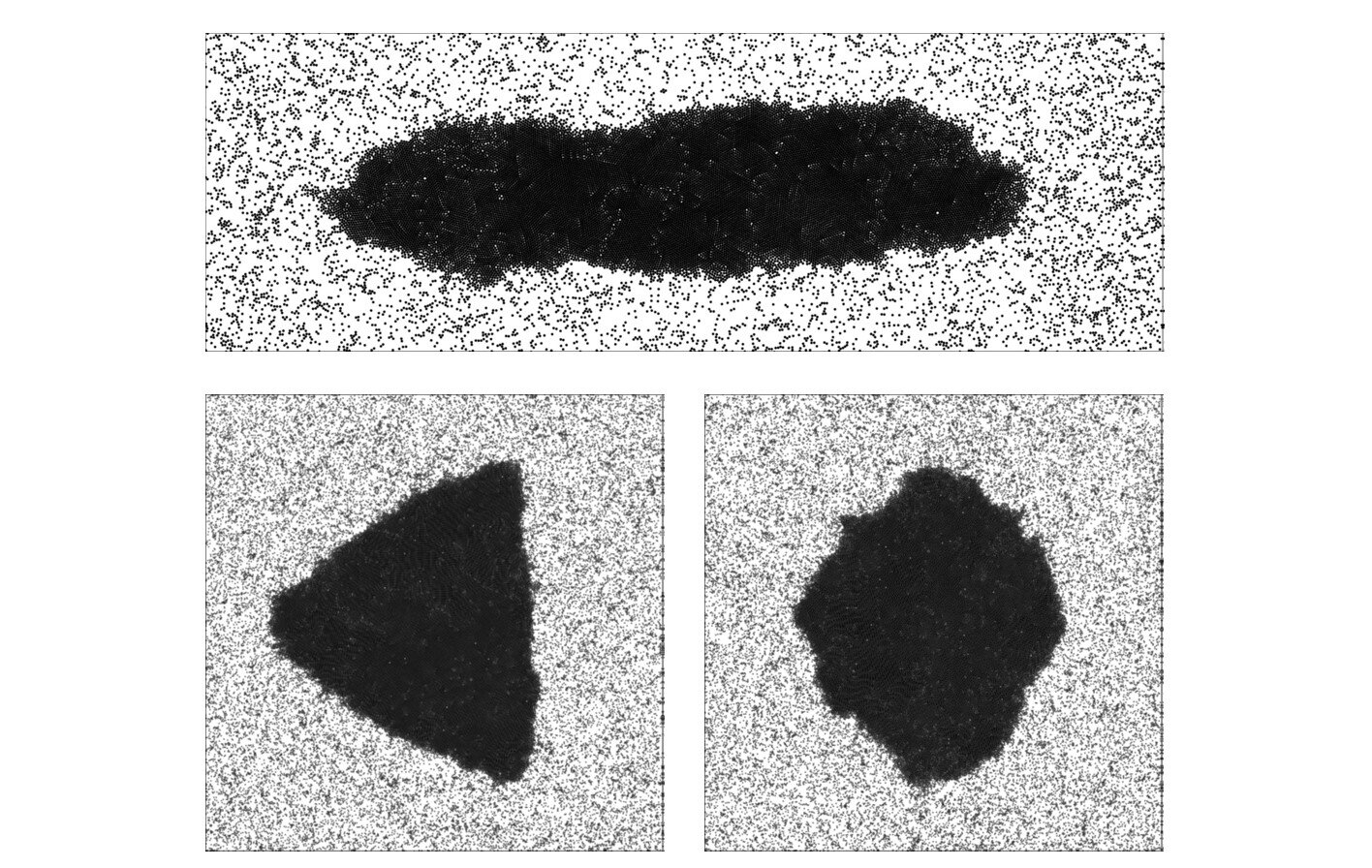Phys.org October 23, 2023
In theoretical models for active particles, it is often assumed that the particles’ swimming speed is always the same. However, this is not so for particles produced in many experiments. An international team of researchers (UK, Germany) used a combination of computer simulations and theoretical derivations, to study the behavior of systems consisting of many active particles whose speed depended on orientation. In the process they discovered a series of new effects. They found that systems consisting of many active particles could spontaneously form clusters—even when the individual particles do not attract one another. The particles constantly moved out of the cluster on the one side and moved back in on the other, thus produced a permanent flow of particles. The shape of the cluster depended on how strongly the orientation of the particles influenced their propulsion speed which could be stipulated by the researchers. According to the researchers using their method it is possible to design programmable matter as the process allows for controlling the way the particles self-assemble… read more. TECHNICAL ARTICLE

… the shape of the cluster depends on how strongly the orientation of the particles influences their propulsion speed…. Credit: Phys. Rev. Lett. 131, 168203, 19 October 2023